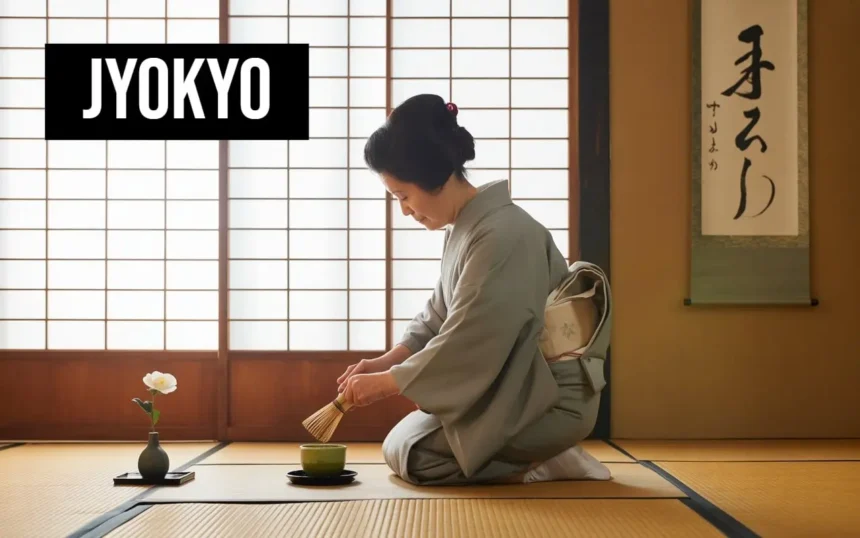The term “Jyokyo” is one of those words that often sparks curiosity because of its cultural depth and broad applicability. While it may appear unfamiliar to many, Jyokyo is a concept that holds strong significance in Japanese language, literature, and modern lifestyle discussions. The word can be translated into English as “situation” or “circumstance,” but in reality, its meaning goes much deeper than a literal translation. Jyokyo reflects context, human perception, and the layered realities that define everyday life. Understanding Jyokyo requires us to look at not only its linguistic roots but also its cultural, social, and philosophical applications.
In today’s interconnected world, where global cultures mix rapidly through media, technology, and business, It has started gaining attention beyond Japan. Scholars, creatives, and even lifestyle enthusiasts have begun exploring it to better understand how circumstances shape experiences. This makes it more than just a word—it becomes a lens through which people can analyze life, art, and decision-making.
Historical Roots of Jyokyo
The word Jyokyo (状況) is made up of two kanji characters: jō (状), meaning “condition” or “form,” and kyō (況), meaning “state” or “situation.” Together, they form a compound that suggests not only the external situation but also the atmosphere surrounding it. Historically, the word appeared in Japanese texts and was widely used in philosophical discussions, particularly in relation to Zen practices and social commentary.
Ancient literature used Jyokyo to describe situations in a way that emphasized emotional perception. For example, a battle scene would not just be described in terms of physical action but also in terms of the Jyokyo—the tension, fear, and silence that shaped how people felt. This way of expression has continued into modern times, making the word central in novels, films, and even news reporting.
Jyokyo in Literature and Media
Writers often rely on Jyokyo to set the emotional tone of their stories. For instance, Japanese novels frequently describe the Jyokyo of a character before revealing their thoughts, allowing readers to sense the atmosphere. The same goes for cinema: directors emphasize the Jyokyo of a scene through lighting, background sounds, and subtle character gestures rather than direct dialogue.
Modern anime and manga also use Jyokyo as a storytelling tool. Instead of telling the audience how to feel, the creators present the situation in a way that allows the viewer to interpret emotions based on the environment. This technique creates a deeper emotional connection and demonstrates how powerful it can be when shaping art.
Jyokyo in Daily Life
In everyday conversations, Japanese speakers use the term Jyokyo when talking about someone’s personal condition or external situation. For example, asking about another person’s Jyokyo may mean inquiring not just about their physical well-being but also about the broader circumstances affecting them.
In the modern world, this has evolved into something practical. For professionals, understanding the Jyokyo of a market helps in decision-making. For students, considering the Jyokyo of a study environment can improve focus and motivation. And for families, being aware of each other’s it helps maintain harmony and empathy.
Practical Applications of Jyokyo
The concept of it is not limited to abstract thought. It has direct applications across different fields and can shape real outcomes. Here are some examples:
- Business and Management: Companies use it analysis to adapt to changing markets, consumer behavior, and economic conditions.
- Education: Teachers consider classroom it before designing lesson plans that suit student moods and learning needs.
- Healthcare: Doctors and therapists assess patient Jyokyo to provide better treatment by considering emotional, social, and environmental factors.
- Personal Growth: Individuals evaluate their own it when making lifestyle changes, such as career shifts or moving to a new city.
These examples show how the word, though simple, carries a multi-layered meaning that blends external reality with human perception.
Benefits
Here are some of the clear advantages of applying the concept of Jyokyo in modern contexts:
- Improved decision-making: By analyzing the situation carefully, people can make more effective choices.
- Emotional intelligence: Awareness of Jyokyo allows individuals to understand others’ perspectives better.
- Cultural insight: Learning about Jyokyo opens doors to deeper appreciation of Japanese culture.
- Mindfulness practice: Recognizing circumstances and atmosphere aligns well with mindfulness and meditation practices.
Challenges
While it is a powerful concept, it also comes with challenges. First, interpreting a situation is highly subjective. Two people can look at the same Jyokyo and perceive it differently. This creates room for misunderstandings in both personal and professional contexts. Second, globalization sometimes oversimplifies cultural words, stripping them of their deeper meaning. Explaining Jyokyo in English often fails to capture its layered essence, leading to partial understanding. Finally, the modern fast-paced lifestyle does not always give people time to reflect on it before acting.
Global Culture
As cultures mix, It has started influencing international perspectives. Western businesses working with Japanese partners often learn about concepts like Jyokyo to improve communication. Similarly, artists and designers outside Japan are inspired by the idea of creating environments where atmosphere speaks louder than direct messaging. Even in psychology, the emphasis on situational awareness mirrors Jyokyo’s cultural significance.
This growing influence suggests that it may become a borrowed concept in other languages, much like zen, ikigai, or wabi-sabi have entered global vocabulary.
Future of Jyokyo in a Digital Age
In the age of technology, It has taken on new meanings. Online environments—whether social media, virtual meetings, or gaming—create their own it. The way people present themselves online, the tone of interaction, and even the design of digital platforms contribute to the overall atmosphere. Understanding this is crucial for businesses aiming to engage audiences, as well as for individuals trying to navigate healthy digital habits.
Artificial intelligence and data analysis also rely on situational awareness, which reflects Jyokyo at a technical level. For instance, recommendation algorithms consider the Jyokyo of user behavior to deliver personalized suggestions. This shows how the cultural concept now plays a role in shaping modern digital interactions.
Real-World Examples of Jyokyo
- Disaster Response in Japan: During earthquakes, authorities stress understanding the Jyokyo on the ground to provide targeted aid.
- Workplace Management: Japanese managers often use it meetings to discuss the current state of projects and adjust plans.
- Art Exhibitions: Curators set the Jyokyo of a gallery through lighting and arrangement to create the intended emotional impact.
These real-world examples prove that it is not an abstract concept but a practical tool.
How to Apply Jyokyo in Personal Life
Anyone can integrate Jyokyo into their daily routine. The first step is awareness—pausing to consider not just what is happening but also the surrounding context. The second step is empathy—understanding how others perceive the same Jyokyo differently. The final step is action—adapting choices based on the awareness of circumstances.
For example, before making a career move, reflect on the Jyokyo of the market, your personal life, and long-term goals. Similarly, when resolving conflicts in relationships, think about the Jyokyo from both sides. This process leads to balanced decisions and healthier outcomes.
Conclusion
The concept of it may look like a simple word, but it represents a worldview that blends external circumstances with human perception. From literature and media to business and personal growth, it helps people see situations more deeply. Its challenges lie in subjectivity and cross-cultural translation, but its benefits include improved decision-making, emotional intelligence, and mindfulness.
In an increasingly digital and interconnected world, It is gaining global attention as a cultural idea that resonates beyond its linguistic origins. Whether in daily conversations, professional practices, or artistic expression, It reminds us to look beyond surface details and understand the full context of life. By adopting this mindset, individuals and communities can navigate change with greater awareness, empathy, and resilience.







